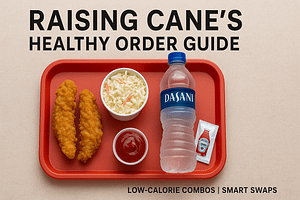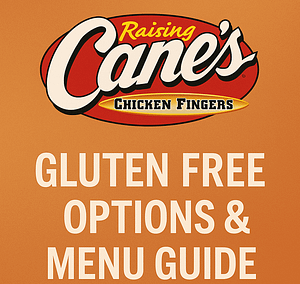Cane’s Chicken Nutrition Information
Raising Cane’s has become a go-to spot for chicken lovers in the United States. Their chicken fingers are famous for being hot, fresh, and always crispy. With more people paying attention to what they eat, many want to know the real nutritional facts behind those golden chicken fingers and popular combos.
In this article, you’ll get a full look at Raising Cane’s chicken nutrition information, what each meal contains, and how it fits into your daily diet.
What Makes Raising Cane’s Chicken Unique?
Raising Cane’s uses fresh, never frozen, chicken tenderloins for all their meals. Each chicken finger is hand-dipped in their signature breading and cooked right after you order. There are no added preservatives or artificial flavorings in their chicken. The focus is on simple, quality ingredients, which is a big reason for their popularity.

Basic Nutrition: Single Chicken Finger
If you want just the facts, here’s a breakdown of a single Raising Cane’s chicken finger:
| item | Calories | Protein | Total Fat | Saturated Fat | Carbohydrates | Sugar | Sodium |
|---|---|---|---|---|---|---|---|
| one Chicken Finger | 140 | 13 | 7 | 1 | 6 | One Chicken Finger | 310 mg |
Each finger packs a solid amount of protein, but also comes with a fair amount of fat and sodium because it’s fried. if you want to check information after combining combos, then check our Raising canes calorie calculator
Nutritional Considerations: What to Watch
Most Raising Cane’s meals are high in fat, sodium, and calories. Here are a few things to keep in mind:
- Fried chicken fingers add more fat and calories than grilled options at other chains.
- Cane’s Sauce is creamy and rich, boosting the calorie and fat count of your meal.
- Sodium levels are high across all combos and sides. If you have high blood pressure or need to limit sodium, go easy on the sauce and sides.
- Portion sizes are large. Splitting a combo or skipping some extras can help you manage intake.
How Does Raising Cane’s Fit Into a Healthy Diet?
If you’re eating Raising Cane’s every day, the high fat and sodium could add up fast. For most people, Raising Cane’s is best enjoyed as an occasional treat rather than a regular meal. Here are a few tips if you want to make your meal a little healthier:
- Order smaller combos. The 3-Finger Combo has fewer calories than the Box or Caniac combos.
- Skip the toast and extra sauce to lower your fat and sodium intake.
- Choose coleslaw as a side to add a little freshness and balance to your meal.
- Share a combo if you’re not that hungry or want to keep calories in check.
- Drink water or unsweetened tea to avoid adding sugar and calories from soda.
Allergen and Special Diet Info
Raising Cane’s chicken fingers contain wheat (gluten), soy, and are fried in canola oil. The sauce has eggs and soy. If you have food allergies or specific dietary needs, always check the official allergen guide or ask the staff for details.
Final Thoughts
Raising Cane’s serves up fresh, tasty chicken that’s hard to resist. Their chicken fingers are rich in protein but also bring extra fat, calories, and sodium, especially when you add sauce and sides. If you’re mindful of your nutrition, stick to smaller portions, go easy on the sauce, and add coleslaw for a bit of balance. Remember, Raising Cane’s meals are best as a treat, not a daily habit.
Nutritional values may change depending on location or serving size. Always check the official Raising Cane’s Nutrition Guide for the most current details.



